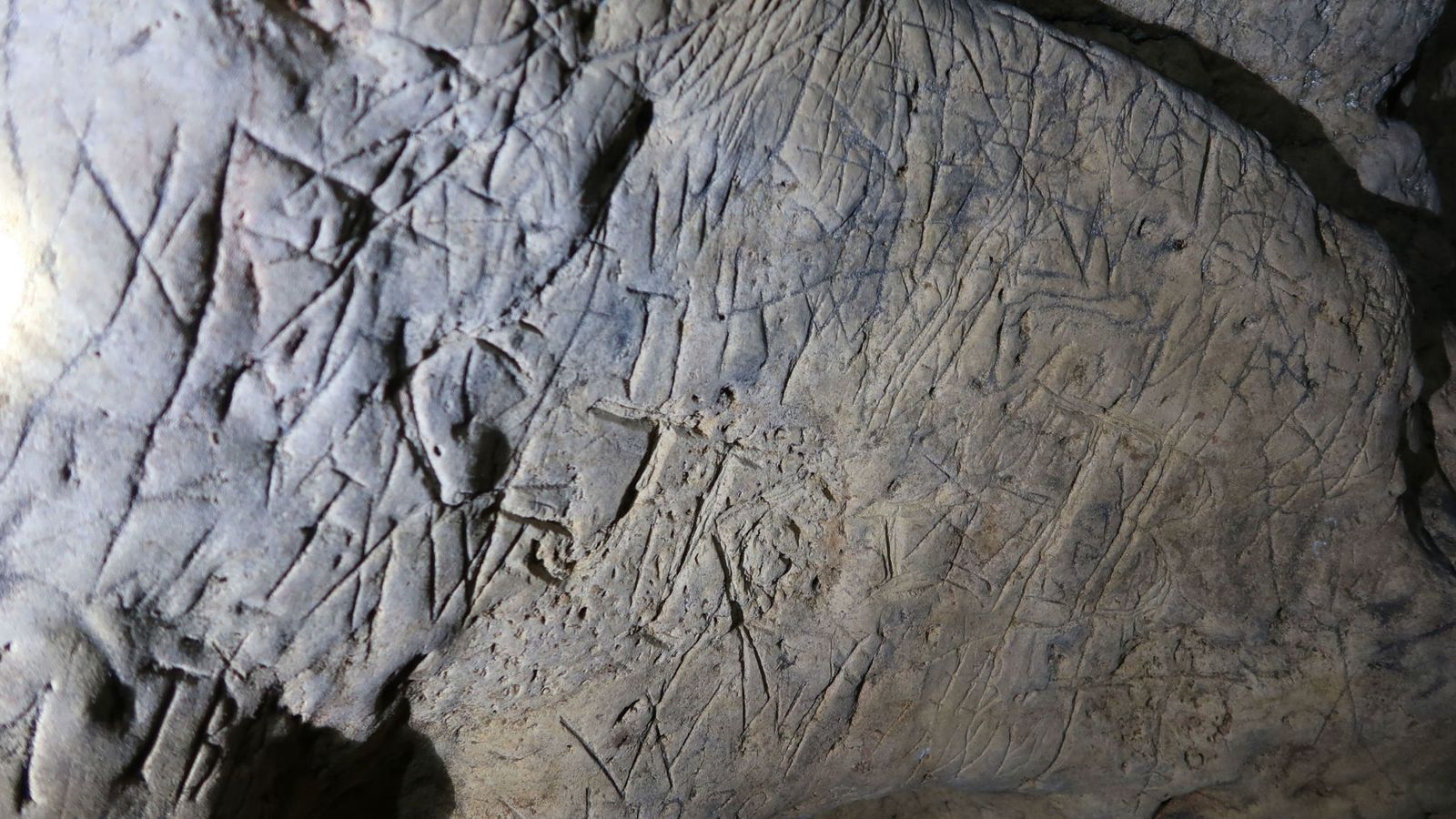Witches' marks at Creswell Crags (UK)
(The news on the official tourism and heritage page of the Creswell Crags site: https://www.creswell-crags.org.uk/2019/02/15/largest-discovery-of-witch-marks-in-britain -at-creswell-crags/)
The Creswell Crags caves (cliffs, grottoes), near Sherwood Forest, in Nottingham, were known for their archaeological and artistic value, since they found cave paintings of a primitive human community -estimated to be about thirteen thousand years ago. years. However, for both archaeologists and tourists, several cracks in the stone had gone unnoticed, several marks piled up in plain sight, which had been taken for 19th century graffiti, and which, after severe analysis, have proven to be protective symbols made around to the seventeenth and eighteenth centuries.
Several months ago, although it has now been made public, Ed Waters and Hayley Clark, members of the British Underground Society, were the discoverers of this phenomenon, which has become the largest collection of cave engravings in the United Kingdom, above of Somerset, which barely had 75 records, while this discovery contains hundreds and hundreds of symbols that are now pending analysis.
However, some were clearly identified, as a result of which the full investigation went ahead. These symbols, which are called witch marks -not to be confused with the physical marks that allowed them to be identified as such-, were recognized for their popularity in other settings, such as door jambs in old houses, on window frames , chimneys or on the walls of cities, even in churches. All of this suggests that such marks were made in the cave for protective, apotropaic purposes, against witches or evil spirits, which in turn establishes the belief that spirits or demons inhabited that cave, or that they could enter the terrestrial world through it from the depths. The idea of caves as gates to hell has been common since ancient times. The particular thing about this discovery is that each chamber of the caves is covered by hundreds of them, some of which are even highlighted or repeated, which makes the discoverers wonder what kind of terrible evil the inhabitants of the area imagined that was down there, so evil or powerful as to perform so many symbols and return several times to reinforce them.
Some of these symbols are of a religious nature, such as W or VV, identified with the Virgin Mary of Christianity, but Virgin Virginis, Virgin of virgins; or PM, Pace María, or two crossed capital letters i, referring to Iesus and the cross. Alison Fearn, from the University of Leicester, says that despite their Christian context, these marks have no religious value, but simply magical, in terms of their protective value. Other symbols have been recognized as possible triskels and hexafoils, flowers with six petals whose specific meaning is unknown, but which were already represented in Roman times, as well as repeated circular patterns. These, and geometric shapes that resemble boxes or simply superimposed, and labyrinthine paths have been given the value of "spirit traps", since in folklore demons and witches are quite obsessive with counting things or finding the right place. beginning and end of a road, and for this reason these paths would keep them busy, deceived and trapped.
This type of ritual graffiti was also common when a population was ravaged by disease or natural disaster, as well as crop failures. This was associated with evil spirits, so preventing them from coming out of hell was conducive to the well-being of the people. This is applicable to this case, since the population lived practically attached to these caves until the 19th century, when a duke changed the location. Until that moment, citizens protected themselves with these talismanic symbols, so the investigation that is taken from now on will be able to reveal which engravings have been found, what specific purposes each one has, what phenomenon occurred during that period of time so that were carried out with such impetus, and perhaps, find out what was the specific evil that was believed to inhabit those caves.
Pietro Viktor Carracedo Ahumada -pietrocarracedo@gmail.com
Related posts:


